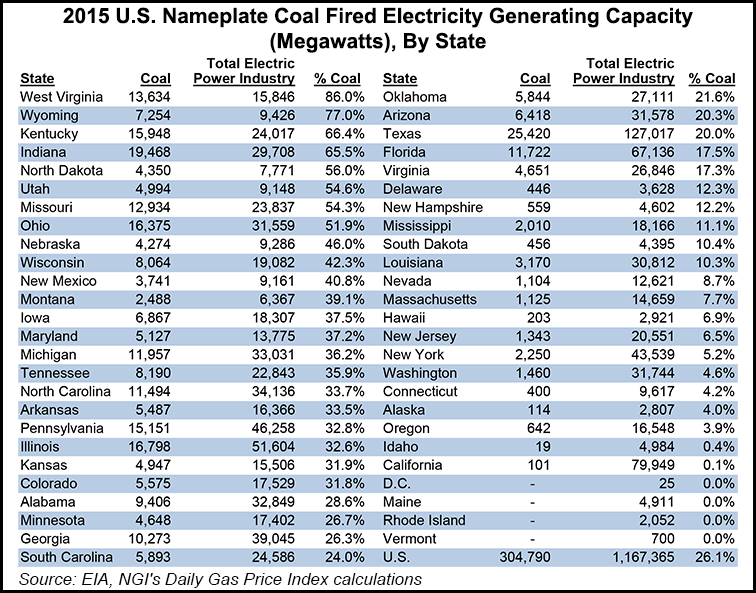Infrastructure | NGI All News Access
Fate of Navajo Coal Plant Sign of Changed U.S. Energy Sector
Utility owners of the massive coal-fired Navajo Generating Station (NGS) were scheduled to meet in Phoenix Monday, and the fate of a bygone era for power generation could be on the chopping block, another casualty of the impact today’s cheap, abundant U.S. natural gas supplies have had on the once-dominant coal-fired electricity sector. Decommissioning the plant is one of the options being considered.

A subplot to the unfolding saga is the possible loss of a major economic engine for the Navajo Nation, whose land is leased by the plant’s operators. Other Native American tribes have been embroiled in energy infrastructure battles with the federal government and oil/gas industry.
The lease for the site on the reservation near Page, AZ, with expires at the end of 2019. Before the shale revolution and low gas prices took a firm hold, the owners, including majority owner/operator Phoenix-based Salt River Project (SRP), were exploring plans to extend the plant’s operating life to 2044. That’s all changed in more recent years, SRP officials concede.
“There have been a lot of efforts made during the last decade to extend the life of the plant,” said an SRP spokesperson, noting that the quasi-private water/electric utility bought out a 21% interest of the Los Angeles Department of Water and Power (LADWP) in 2013 with that in mind. However, it wasn’t until last year that LADWP stopped taking some supplies from the Arizona plant.
“These efforts, supported by many, have put the owners of NGS in a position to make clear decisions about the plant’s future operations,” the spokesperson said. “With the economics of the energy industry changing rapidly and falling natural gas prices altering how coal-fired power costs compare with other options, SRP must weigh these developments against the regulatory and environmental uncertainties that face NGS.”
While the economics of shale gas development and other economic factors are in play, there are many other complexities related to the power plant because of its location and the combination of Native American and federal government roles.
In addition to the Navajo lease, several rights-of-way for the 2,250 MW power plant were issued by federal agencies for both the plant and additional facilities. These involve separate agreements scheduled to expire about the same time as the plant site lease. The U.S. Bureau of Reclamation, Bureau of Indian Affairs and other federal agencies must approve or authorize the renewals to extend NGS operations and all associated facilities beyond 2019.
Also regarding the source of the coal, a revision to the Kayenta “life of mine plan” must be approved by the U.S. Office of Surface Mining to permit fuel supplies to NGS for future operations through 2044.
In addition to SRP, the other investor-owned utility owners are Arizona Public Service, Tucson Electric Corp. and NV Energy.
Last year NV Energy, under increasing state legislative pressure to wean itself off coal-fired generation, began publicly talking about giving up its interest in the Navajo plant.
© 2024 Natural Gas Intelligence. All rights reserved.
ISSN © 1532-1231 | ISSN © 2577-9877 |
